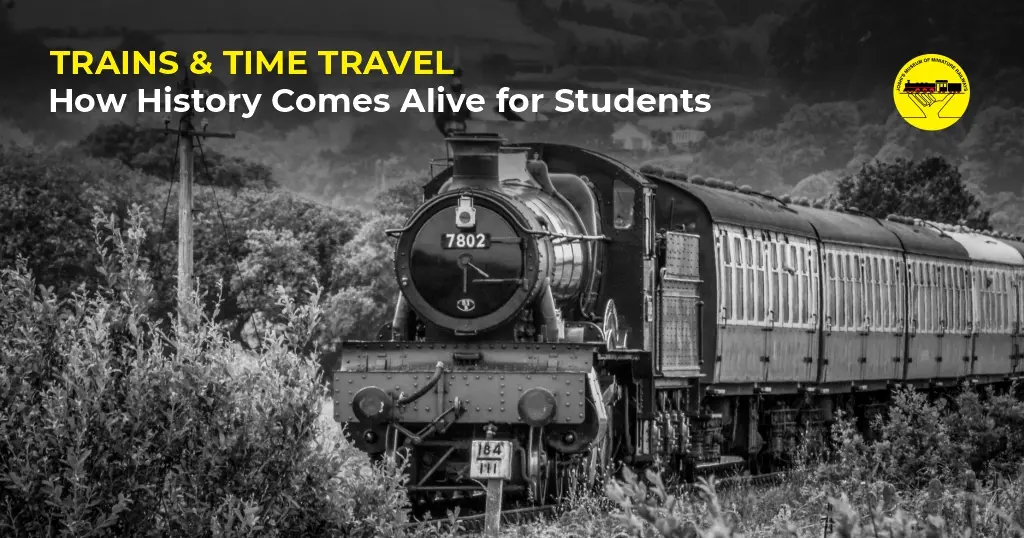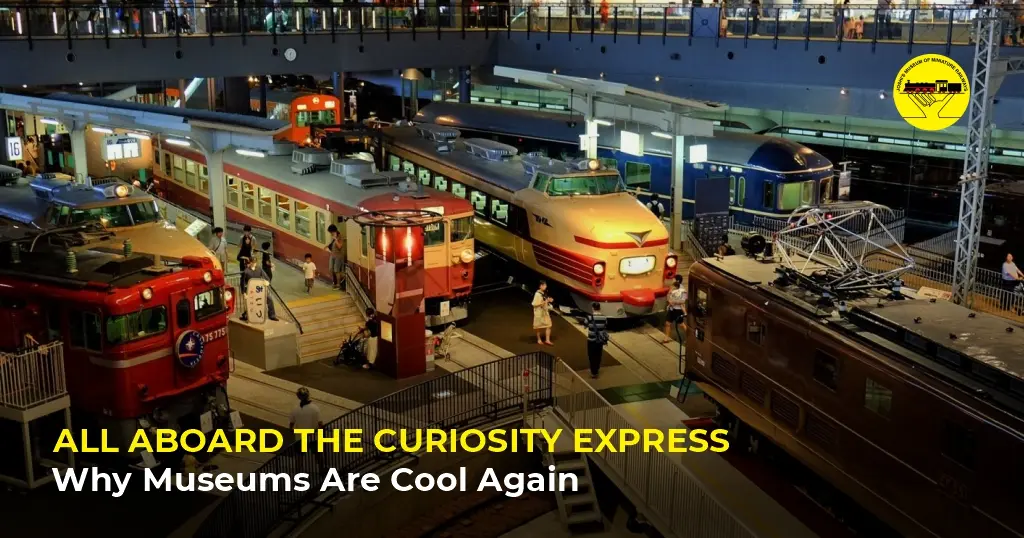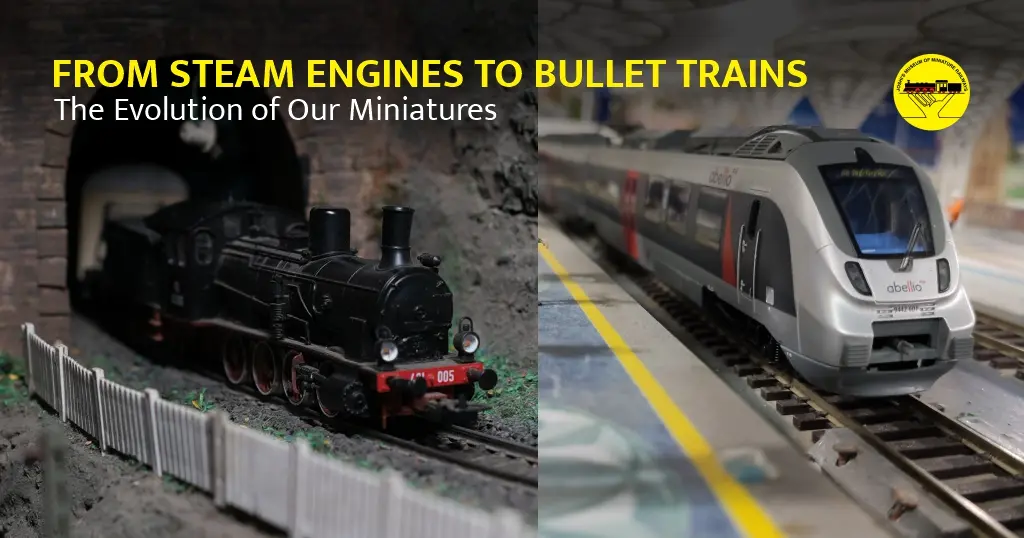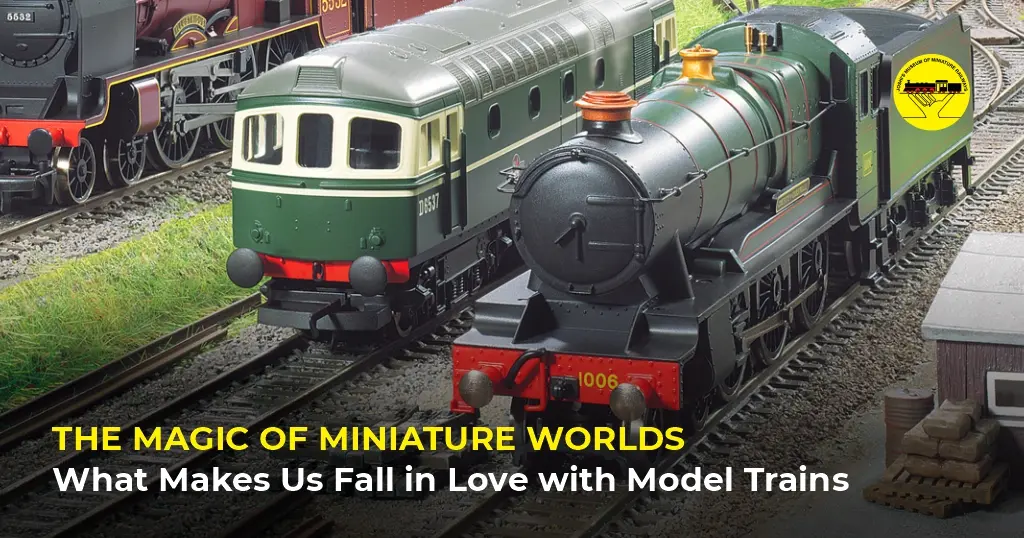
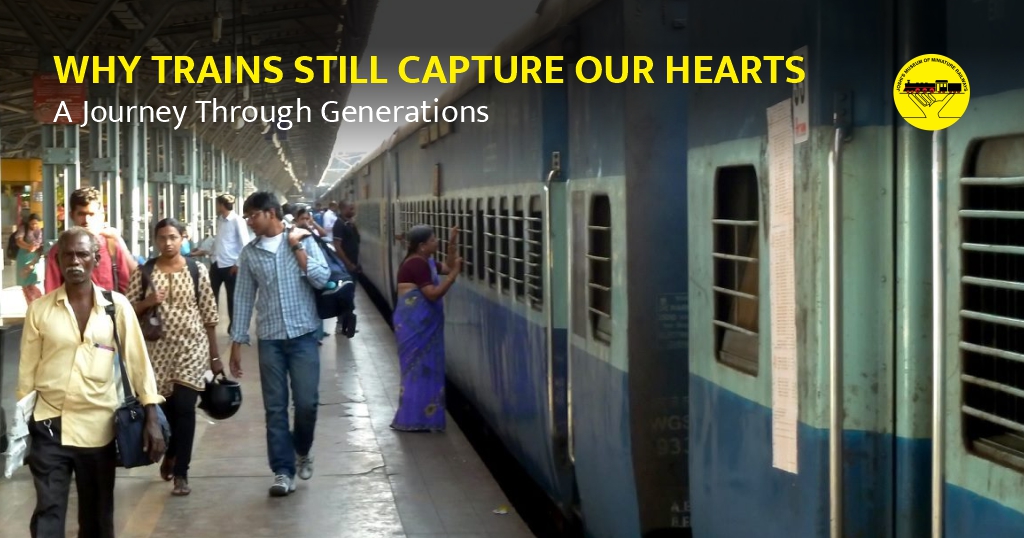
There’s something deeply timeless about the sight of a train cutting across the horizon — its rhythmic hum, steady wheels, and distant whistle somehow tethered to memory, movement, and meaning. In an age of digital speed and flights that cross continents in hours, trains remain emotionally unmatched, stirring something within us that no other form of transport can.
But why do trains continue to capture our hearts? Why have they never become obsolete in the human imagination — even as our cities and technologies change at breakneck pace?
This is more than nostalgia. It’s about how trains became part of our shared stories, metaphors, and personal histories, and how — even today — they serve as a bridge between generations, time periods, and states of mind.
Unlike planes or cars, trains move with a certain grace. They are fast, but never frantic. When you travel by train, you’re not just going from one place to another — you’re witnessing the journey. The changing landscapes outside the window mirror your own inner reflection. Hills roll by, towns appear and vanish, and time stretches out in an almost meditative rhythm.
In literature and cinema, this quality is often harnessed to reflect emotional transitions. From Leo Tolstoy’s Anna Karenina to Satyajit Ray’s Pather Panchali, trains are not mere background elements — they symbolize life’s inevitability, departures and arrivals, choices and consequences. They are at once vehicles of destiny and backdrops for introspection.
There is poetry in a train station. Every platform is a threshold. There’s the moment before departure — full of anticipation, farewells, the clatter of bags, a quick embrace. There’s the piercing horn, the gradual movement, the blur of faces waving from windows.
Writers and poets have long been enamored by this imagery. W.H. Auden, in his poem Night Mail, celebrates the humble mail train crossing the countryside, bringing stories, hopes, and anxieties with every envelope. In Indian literature, trains have often been metaphors for freedom, migration, separation, or spiritual journeys — as seen in R.K. Narayan’s Malgudi Days, where the railway station is a recurring place of drama and transition.
These aren’t just mechanical movements. They’re emotional rituals, and we, the passengers, are often caught between what we’re leaving behind and what we hope to find ahead.
Trains are, in many ways, physical timelines. They link cities, villages, and memories. For many of us, our earliest sense of travel is shaped by trains — childhood journeys wrapped in the scent of steel, chai in paper cups, paperbacks half-read, and the hum of conversations from neighboring berths.
A single train journey can span generations. Grandparents recall traveling in wooden compartments, under ceiling fans, with cloth-wrapped tiffins and friendly strangers. Parents remember school trips, college travels, or long-haul rides to their hometowns. Today’s children still peek out from the window bars, ask for “window seat”, and make paper cones out of train tickets.
The railway doesn’t just carry people; it carries time itself.
Unlike cars or planes, trains are shared spaces. You travel with strangers, sometimes for hours. You exchange glances, stories, or silence. There’s something humbling about being part of a collective rhythm — sharing meals, charging phones from the same plug point, navigating the upper berth ladder with the help of a co-passenger.
This shared experience reflects something very human: we are all in transit, and though our destinations may differ, we often journey side by side.
In this way, trains become a subtle teacher of empathy and patience. You slow down. You notice. You share. Whether it’s the retired uncle who offers snacks to your child, or the student catching up on sleep with a laptop in hand — you witness slices of life that remind you how wide, diverse, and beautiful the world still is.
No country quite captures the emotional and cultural pull of trains like India. With one of the largest rail networks in the world, the Indian Railways has been a social and geographic unifier — connecting the deserts of Rajasthan with the tea fields of Assam, the snow of Himachal with the coast of Kerala.
For decades, trains have brought migrants to cities, carried soldiers to borders, transported pilgrims to sacred sites, and hosted love stories, heartbreaks, and once-in-a-lifetime conversations. Trains are where India’s many Indias meet — rich and poor, urban and rural, north and south, past and future.
Even today, as air travel becomes more common, train journeys remain the preferred mode of travel for millions — not only for economy but for the experience itself.
The train whistle is not just a sound — it’s a feeling. It marks beginnings, endings, hopes, farewells, reunions. It is both practical and poetic. In many old Hindi songs, the train whistle signals separation (“Chalte Chalte”), urgency (“Gaadi Bula Rahi Hai”), or even freedom (“Zindagi Ek Safar Hai Suhana”).
Even in modern music and film, trains continue to be visual metaphors. Think of the final train scene in Dilwale Dulhania Le Jayenge, where the slow pull of the train becomes the climax of the romantic arc. Or The Darjeeling Limited, where the entire narrative is based on healing through a train journey.
There’s something universally human about watching a train disappear into the distance — a sense of longing, of something just beyond reach, of motion that cannot be reversed.
In our current world — one that’s obsessed with speed, convenience, and solitude — the train feels almost countercultural. It insists on slowness, on being present, on sharing space.
While bullet trains and metro lines have transformed how we travel, the core philosophy of train travel remains intact: connection over isolation. You can read a book, stretch your legs, talk to a stranger, or simply stare out at open fields for hours — and no one will ask you to “move along.”
This, perhaps, is the greatest reason trains still capture our hearts: they resist the pressure to be forgettable. Each train journey leaves something behind — a moment, a scene, a realization.
To call a train “just a way to get somewhere” is like calling a book “just paper and ink.” Trains are stories, philosophies, memories, metaphors. They have taken people to new homes, new loves, new lives — and sometimes back to themselves.
In a world full of digital maps and instant arrivals, the train still teaches us that the journey matters. That watching the scenery change, feeling time stretch, and hearing the whistle fade are as valuable as reaching the destination.
So the next time you board a train — even for a short ride — remember, you’re not just a passenger. You’re part of a much older journey, one that generations before you have taken, and generations after you will too.
Because trains don’t just move through space. They move through hearts.

